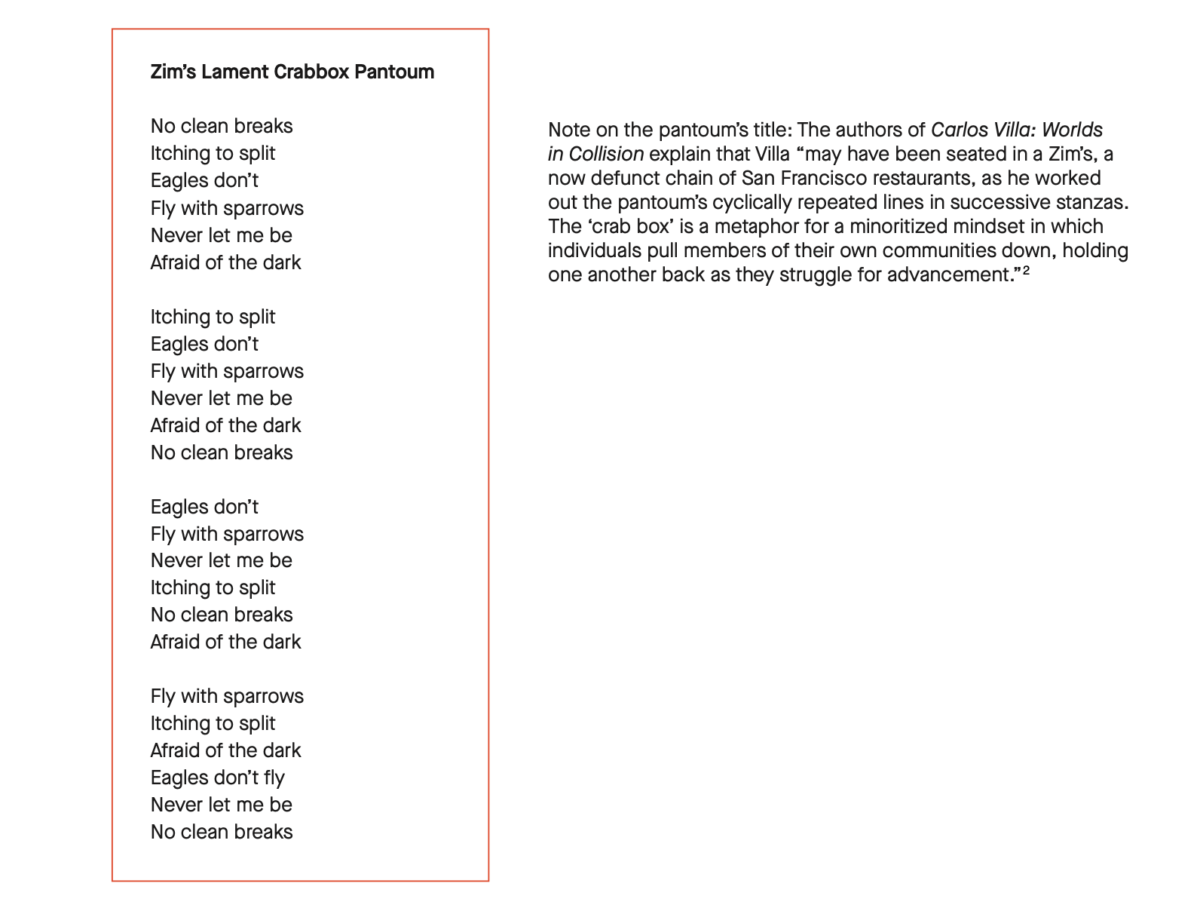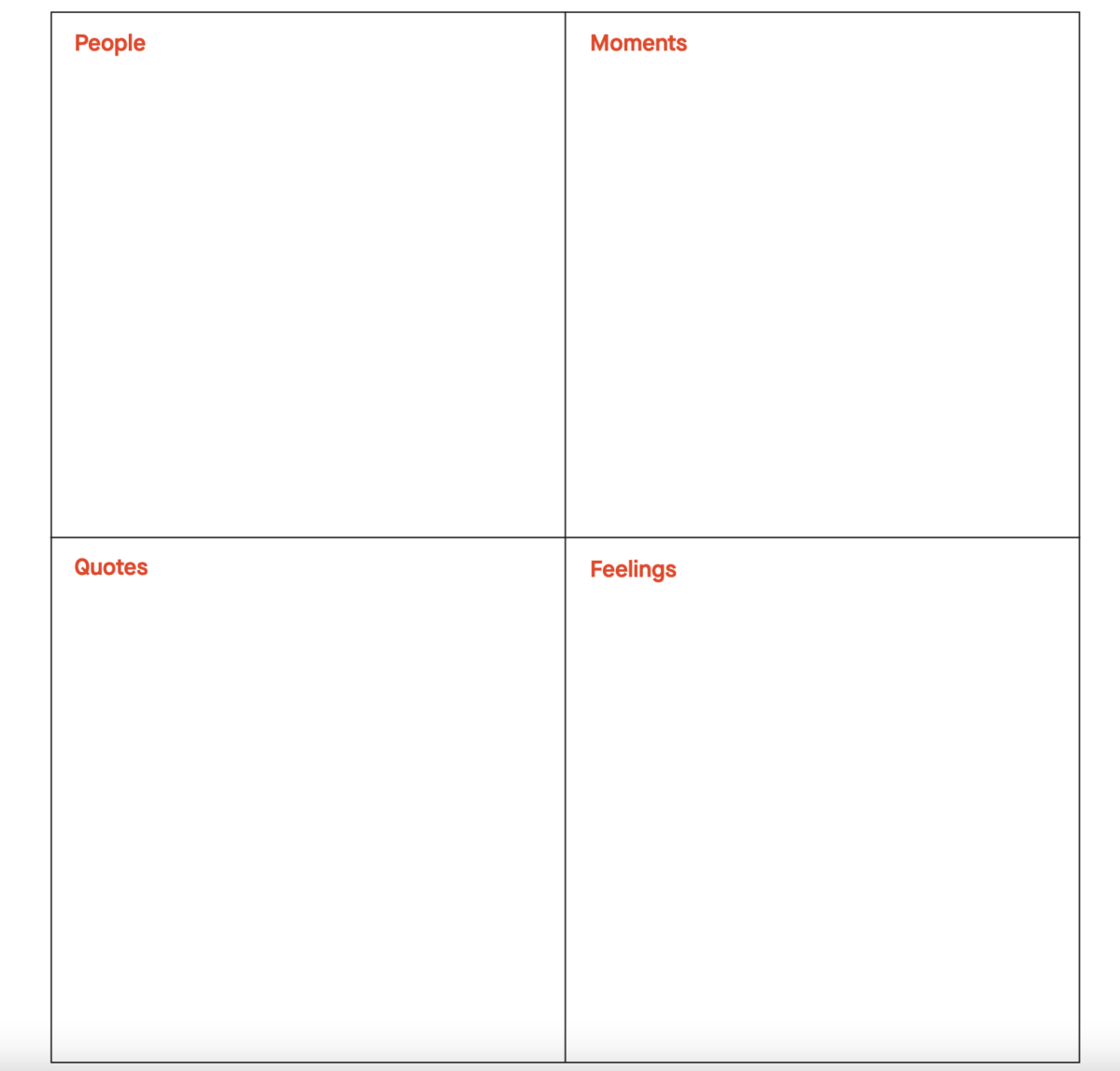Activity
Pen a Pantoum
Having come of age during the Beat Movement of the 1950s, Carlos Villa wrote poems and often included lines of poetry in his art installations. Learn about one kind of poem he wrote—the pantoum—and then write your own using the template linked in the sidebar.

Click through the gallery to see parts of the pantoum activity.
Introduction:
In describing the pantoum, a form of poetry that derives from the Malay oral tradition pantun berkait, Carlos Villa observed that it “might be of indefinite length—made up of stanzas whose four lines are repeated in a pattern . . . so as the words and phrases are repeated—the meanings shift and change because of their placement.”¹
Read the following pantoum, “how we survived: 爺爺’s pantoum (ii)” by the poet huiying b. chan and note which lines get repeated and how the impact of each repeated line changes as the poem goes on:

Here is Carlos Villa’s own pantoum “Zim’s Lament Crabbox Pantoum,” which uses six-line stanzas. How does Villa convey a different message in each stanza, just by placing the same lines in a different order? How does Villa’s pantoum compare/contrast with “how we survived: 爺爺’s pantoum (ii)” in terms of format and theme?

Write Your Own Pantoum:
Materials:
1. Pantoum brainstorming chart and writing template (download PDF from sidebar)
2. Pen or a pencil
Procedure:
- Brainstorm for Your Own Pantoum: Using the brainstorming chart, jot down the people, moments, quotes, and feelings that come to mind when you think about your identity, your family history, or your community. What do you want to reveal about yourself through your poem? Feel free to use words, doodles, or emojis to express your thoughts.
-
Now, write your pantoum by using the writing template; the different colors show where certain lines should repeat. Read your draft out loud so you can hear the rhythm and repetition of your lines. Keep revising until your lines and stanzas sound right to you; feel free to use extra templates if necessary.
Feel free to write more stanzas to make your pantoum longer. Just remember that the second and fourth lines of one stanza become the first and third lines of the next stanza. In the final stanza, bring back Line 3 and Line 1 of the first stanza, so that in the end, each line of the poem gets repeated.
After finishing your final draft, consider: What title might you give your pantoum? With whom might you share this poem?
Option: Collaborate with your friends or family. Decide on a theme and have each person contribute a line that gets inserted into the pantoum template.
Sources:
- Francia, Luis H. “America Is in His Art: Carlos Villa’s Poetics of Multiculturalism,” in Carlos Villa: Worlds in Collision, eds. Mark Dean Johnson, Trisha Lagaso Goldberg, and Sherwin Rio (Oakland, CA: University of California Press, 2022), 89.
- Johnson, Mark D., Trisha Lagaso Goldberg, and Sherwin Rio. “Worlds in Space: Carlos Villa’s 1990s Notepad Drawings” in Carlos Villa: Worlds in Collision, eds. Mark Dean Johnson, Trisha Lagaso Goldberg, and Sherwin Rio (Oakland, CA: University of California Press, 2022), 96.





